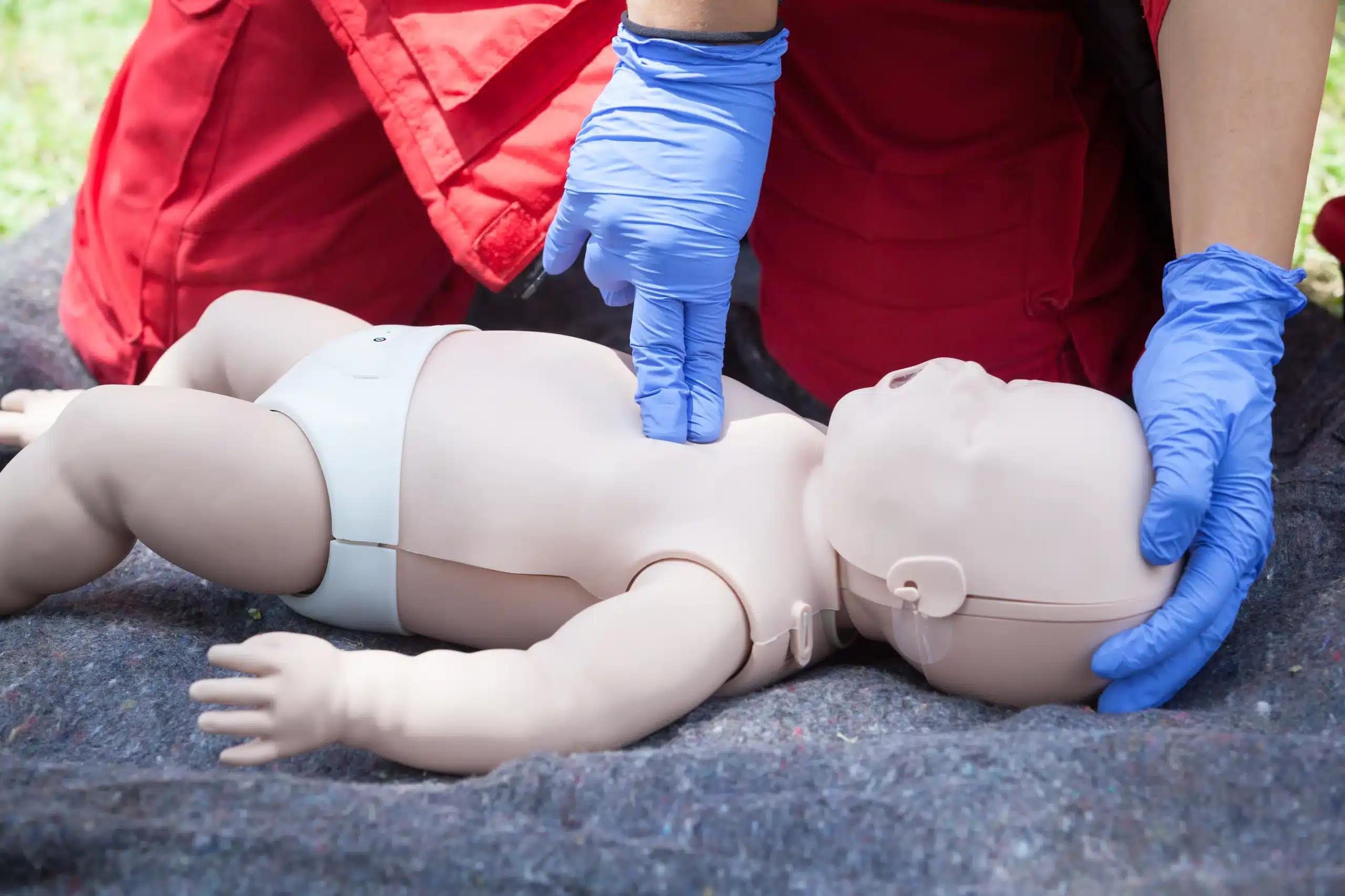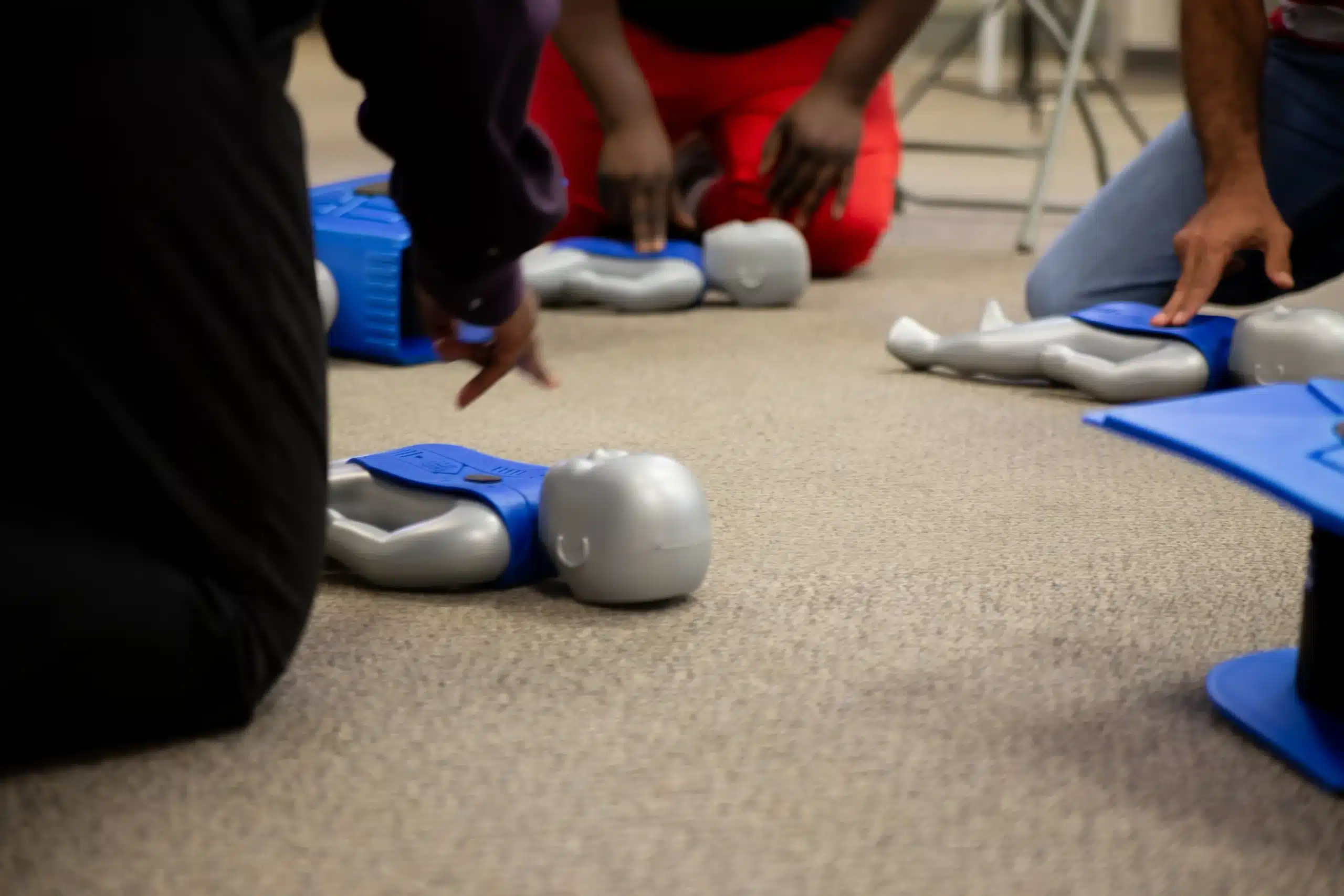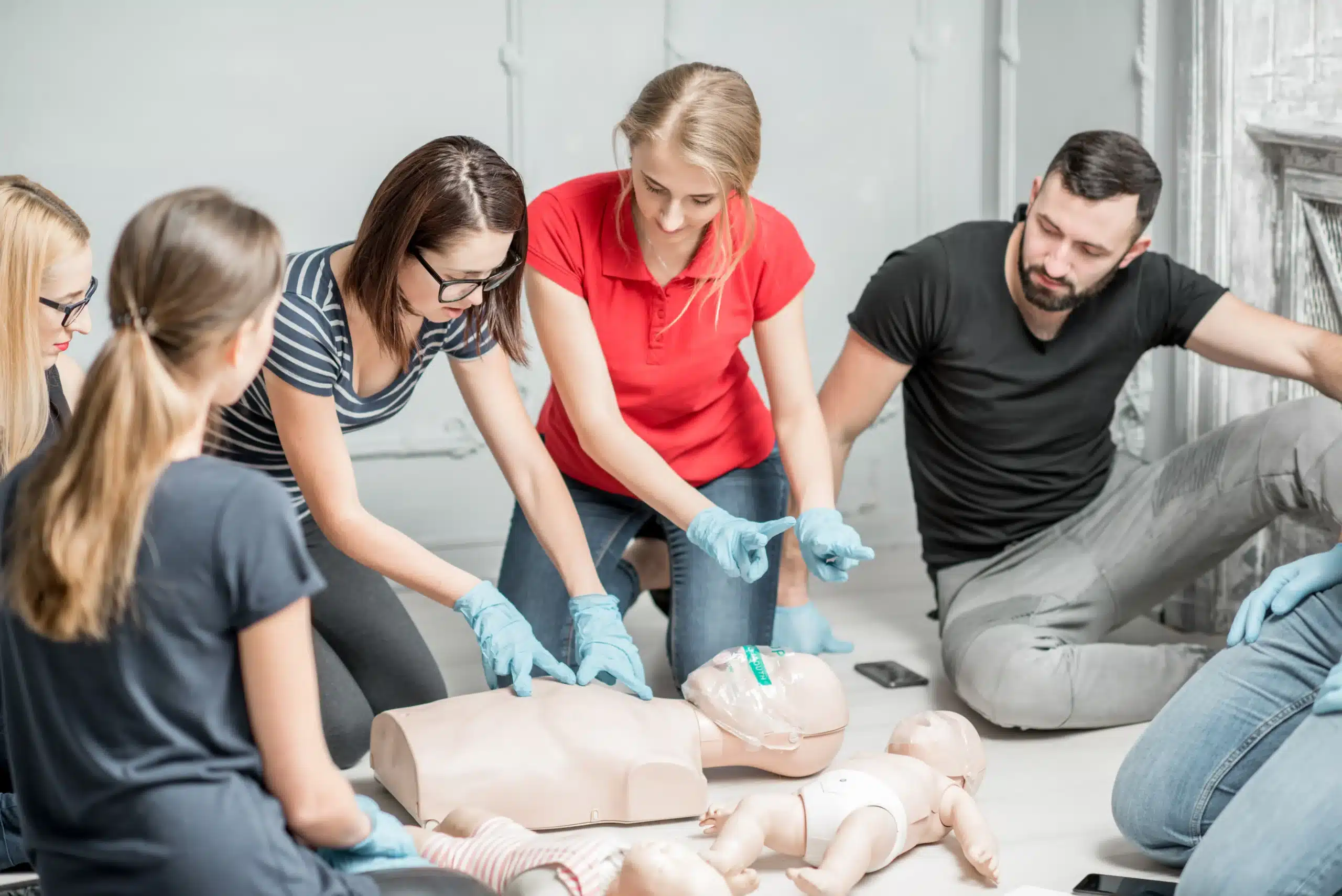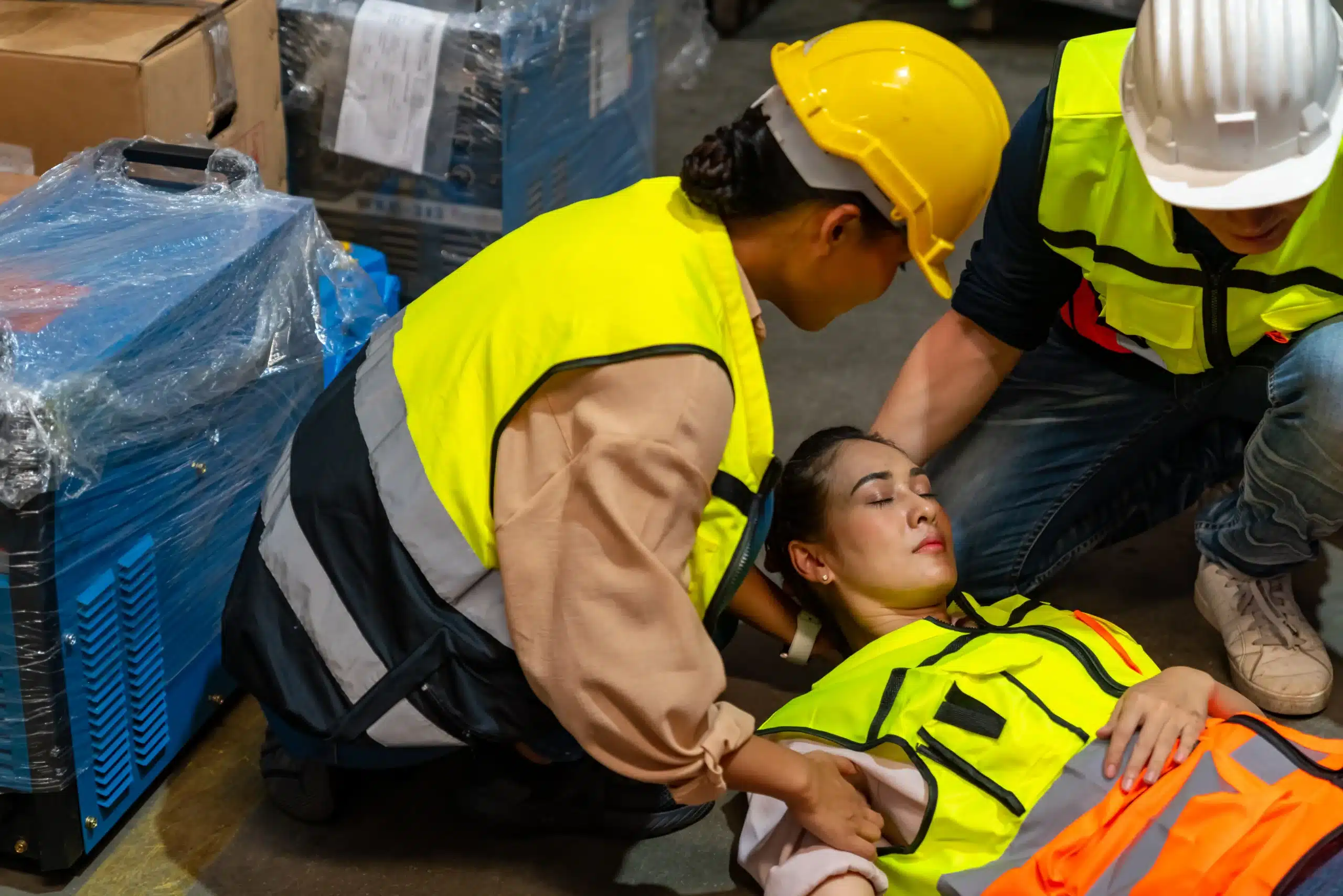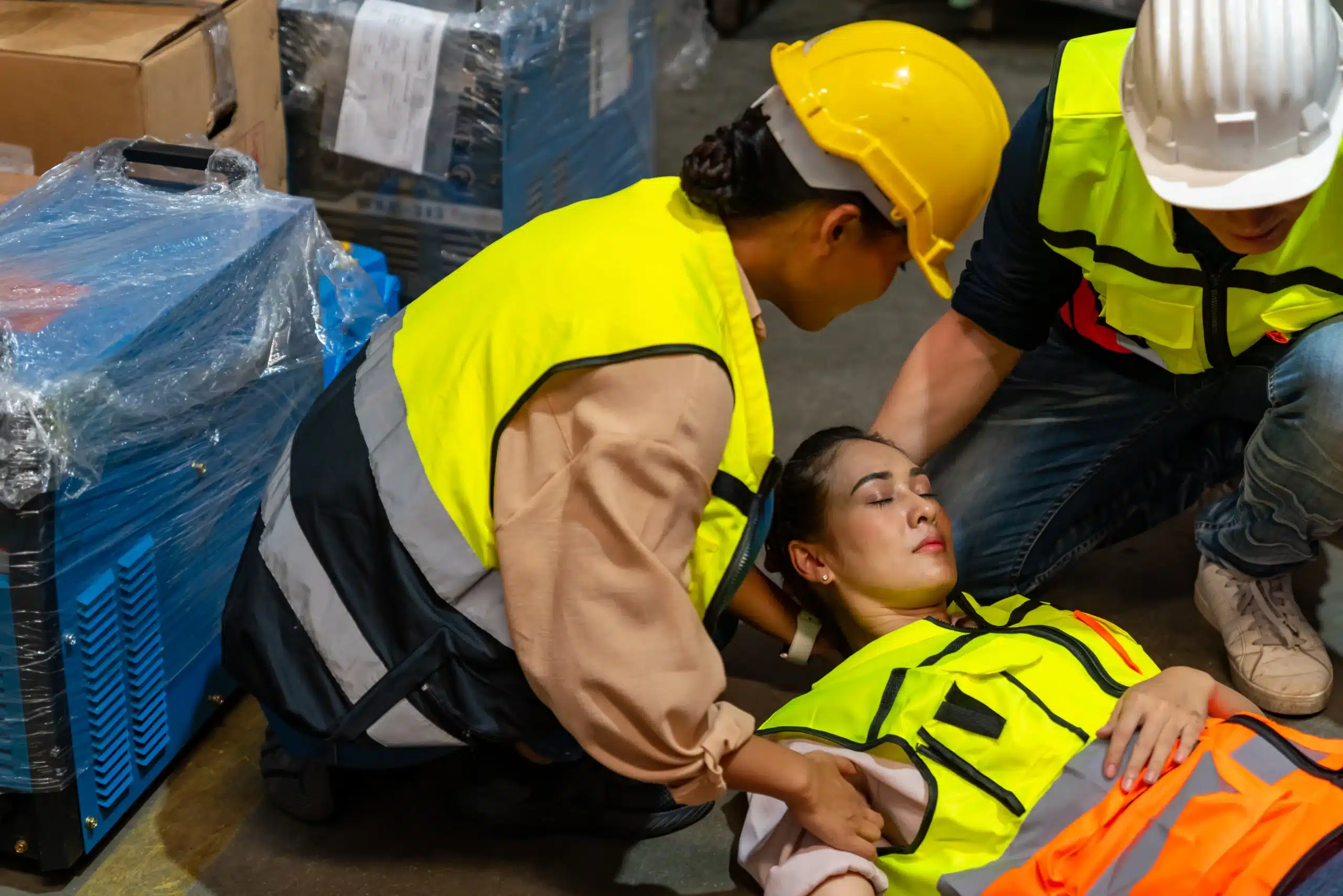The ability to perform CPR can make a profound difference in someone’s life, and getting certified is easier and more affordable than you might think. This guide is your one-stop resource for understanding AHA CPR courses, specifically focusing on how to find aha CPR courses low cost. We’ll cover the different types of AHA certifications, the costs involved, and how to find discounts and promotions. We’ll also explore the benefits of AHA certification, debunk common myths, and provide practical tips for locating training centers and preparing for your course. Whether you’re a healthcare professional, a childcare provider, or simply someone who wants to be prepared for emergencies, this guide has you covered.
Key Takeaways
- AHA CPR certification provides valuable, science-backed training: These courses cover essential life-saving techniques, from basic CPR to using an AED, and are based on the latest medical guidelines. Explore options like blended learning to fit your schedule and learning style.
- Finding affordable AHA CPR training is easier than you think: Many training centers offer discounts, group rates, and other ways to save. Do your research and compare prices to find a course that fits your budget.
- CPR certification benefits everyone: Regardless of your profession, knowing CPR can make you a more valuable employee, a more confident community member, and a potential lifesaver. It’s a skill that empowers you to make a real difference.
What are AHA CPR Courses?
The American Heart Association (AHA) offers a range of CPR and first-aid training courses designed to equip people with life-saving skills. These courses teach techniques for performing CPR, using an Automated External Defibrillator (AED), and responding to choking emergencies. AHA courses cater to different audiences, from healthcare professionals and first responders to the general public. This ensures that anyone can learn these essential skills. The training is based on the latest science and guidelines for emergency cardiovascular care. Many courses use a blended learning format, combining online learning with in-person skills sessions where you can practice and demonstrate your skills. Upon successful completion, the AHA provides certification, which can be valuable for career advancement, especially in healthcare. If you’re looking for high-quality, science-backed CPR training, an AHA course could be a great fit.
How Much Does AHA CPR Certification Cost?
Getting your AHA CPR certification involves a few different costs. Let’s break down the typical expenses so you can plan your training budget.
Online Costs
The American Heart Association (AHA) offers a convenient online portion for many of its CPR courses. For example, the online component of the Heartsaver® CPR AED course is $16.50. This covers the educational materials and online instruction you’ll need to learn the basics of CPR and how to use an AED. The online portion of the Heartsaver First Aid CPR AED course costs $21.00. Remember, these online courses are just the first step. You’ll still need an in-person skills session for your full certification.
In-Person Skills Session Costs
The in-person skills session is where you’ll put your online learning into practice with hands-on training and testing led by a certified AHA instructor. This part is usually priced separately from the online portion, and the cost varies by training center. Check the training center’s website or contact them for pricing details. For example, Health Coaching Now lists their skills session prices separately.
Other Costs
While the online course and in-person skills session are the main expenses, keep in mind there might be additional costs. Some training centers may have extra fees for things like certification cards or additional course materials. Always ask about any extra fees upfront. Also, remember that prices can fluctuate, so double-checking with your chosen training center is the best way to get current pricing. For some added perspective on certification card costs, take a look at this information from CPR Certified.
Find Affordable AHA CPR Courses
Getting CPR certified shouldn’t break the bank. Here’s how to find AHA CPR courses that fit your budget:
Find Discounts and Promotions
Many training centers offer discounts and promotions, so keep an eye out! Some offer instant savings with promo codes for individual registrations. Websites like My CPR Certification Online also feature CPR/BLS and First Aid coupons. A little online searching can go a long way.
Group Discounts and Packages
If you’re training with a group, look for group discounts. Some centers, like Calm Ed Training Center, offer discounts when groups register (even separately) using a specific promo code. This can be a great way to save if you’re coordinating training for your workplace, a community group, or even a group of friends. The American Heart Association and the American Stroke Association also frequently offer community programs at reduced rates.
Berkeley CPR Classes’ Low Price Guarantee
At Berkeley CPR Classes, we believe in accessible training. We offer a low price guarantee and encourage open communication about pricing. If you ever see a lower advertised price for an equivalent course, let us know! We’re committed to making sure you find a course that works for you. For community training, the American Heart Association provides resources and support through their community training kits, which can help organizations deliver CPR training at a lower cost.
What Do AHA CPR Courses Cover?
Blended Learning
The American Heart Association (AHA) offers a Heartsaver® CPR AED online course. This format combines online instruction with a separate, in-person skills session. You work through the online material at your own pace and then attend a hands-on session with an AHA instructor to practice your skills. This blended learning approach offers flexibility while ensuring you get the hands-on training necessary to confidently perform CPR and use an AED. The combined online and in-person format accommodates various learning styles and busy schedules.
AHA vs. Other CPR Programs
When comparing AHA CPR training with programs from other organizations like the American Red Cross, you’ll notice key differences. Course prices vary between the AHA and Red Cross based on factors like the specific course, your location, and the training center. Comparing prices from different providers is always recommended. AHA courses often include a strong focus on advanced medical techniques in addition to essential life support skills. This comprehensive approach can better prepare you for a broader range of emergency situations.
Why Get AHA CPR Certified?
Getting CPR certified is a valuable asset, but choosing the right certifying body matters. Opting for American Heart Association (AHA) CPR certification offers distinct advantages that can significantly impact your professional life and your ability to provide effective assistance in emergencies. Here’s why AHA certification stands out:
Industry Recognition
The AHA is a highly respected authority in the medical community. AHA certifications are widely recognized and often preferred by employers, especially in healthcare. AHA courses frequently incorporate advanced medical techniques alongside essential life support skills, making them ideal for healthcare professionals, emergency responders, and anyone seeking comprehensive medical training. This focus on advanced techniques sets AHA certifications apart from other programs like the Red Cross, which tends to focus on basic life support. This distinction can be crucial for career advancement and demonstrates a commitment to high-quality training.
Evidence-Based Training
AHA CPR training is rooted in the latest scientific research and best practices. The curriculum is regularly updated to reflect evolving medical knowledge, ensuring you learn the most effective techniques. This evidence-based approach not only equips you with essential skills but also provides a certification that can open doors to various career opportunities, particularly in healthcare. Knowing you’ve received training based on the latest research provides confidence in your ability to respond effectively in critical situations.
Certification Renewal
AHA CPR certifications are typically valid for two years. This renewal requirement ensures that certified individuals stay up-to-date with the latest guidelines and maintain their skills. For example, the Heartsaver CPR AED certification requires both online and hands-on training and is valid for two years upon successful completion. While renewing your certification requires some effort, it demonstrates your ongoing commitment to providing high-quality CPR and reinforces your credibility. Regular renewal also helps you adapt to any changes in CPR procedures, ensuring you’re always prepared to deliver the most effective care.
Find AHA Training Centers
So, you’re ready to get your AHA CPR certification—great! This section covers everything you need to know about finding a training center and preparing for your course.
Locate Centers Near You
The American Heart Association website has a tool to locate certified training centers. Enter your zip code or city to find nearby options. Many centers offer various courses, including CPR, First Aid, BLS, ACLS, and PALS. Once you’ve found a few, compare schedules, courses, and pricing. Make sure they offer the specific training you need, like the hands-on skills session required after online coursework. Our Berkeley CPR Classes website also lists available courses in your area, including Alameda, Oakland, and Berkeley.
What Happens During Training
The AHA often uses blended learning, combining online coursework with in-person skills sessions. You’ll typically complete the online portion at your own pace, learning key concepts. The in-person session lets you put that knowledge into practice. This hands-on training is crucial for mastering CPR skills. You’ll work with a voice-assisted manikin (VAM) that gives real-time feedback, helping you refine your technique and build confidence. Remember, the in-person session is usually an additional cost, so factor that into your budget. Berkeley CPR Classes offers a variety of courses, including BLS, ACLS, and more, with convenient in-person training.
Prepare for Your Course
Before signing up, think about your specific needs. Who are you most likely to use these skills on? Different courses cater to different demographics. For example, healthcare providers might need BLS or ACLS, while childcare providers might focus on pediatric CPR. Clarifying your goals helps you choose the right course. Check out our discount group classes to train with colleagues or friends. Also, review our low price guarantee for the best value.
AHA CPR Courses by Profession
AHA CPR courses cater to a wide range of professions. Whether you’re a healthcare provider, an educator, or someone who wants to be prepared for emergencies, understanding the value of these courses within your specific field can be incredibly helpful. CPR training empowers individuals to respond effectively in critical situations, potentially saving lives.
Healthcare
In healthcare, AHA courses are often preferred. They frequently emphasize advanced medical techniques alongside essential life support, making them a comprehensive choice for medical professionals. Doctors, nurses, EMTs, and other healthcare providers benefit from the in-depth training provided by AHA certifications like BLS (Basic Life Support) and ACLS (Advanced Cardiovascular Life Support). These certifications equip professionals with the skills to handle various medical emergencies.
Childcare and Education
For those working in childcare and education, AHA CPR training is essential for maintaining a safe environment. From daycare providers and nannies to teachers and camp counselors, having the skills to respond to a child’s medical emergency can be life-saving. The AHA offers resources like the “Be the Beat” program, which provides free tools for schools to implement CPR and AED training. This empowers educators and potentially increases the number of CPR-trained individuals within the community. Passing these skills on to students and their families can create a ripple effect of preparedness.
Workplace Safety and the Public
Beyond specific professions, CPR training is valuable in any workplace or public setting. Construction workers, office staff, community volunteers—anyone can benefit from knowing how to respond to a sudden cardiac arrest. The AHA provides various community programs and resources, including the Adult & Child CPR Anytime Training Kit, making it accessible for individuals and organizations to learn these lifesaving skills. Berkeley CPR Classes offers convenient and affordable options for group discounts, making it easier for workplaces and community groups to get certified together.
AHA CPR Course Myths
Let’s clear up some common misconceptions about AHA CPR courses. These myths can prevent people from getting this life-saving training.
CPR’s True Value
One of the biggest myths is that CPR certification is expensive. While there are costs involved, think of it as an investment in your skills and ability to help others. The true cost of AHA CPR classes varies depending on the course type, location, and instructor. Look for providers like Berkeley CPR Classes, which offers a low price guarantee. Knowing the actual price range helps you budget and find the most affordable option. Remember, the value of being prepared for a medical emergency is priceless.
CPR for Non-Medical Professionals
Another myth is that CPR is only for medical professionals. This couldn’t be further from the truth. Anyone can learn CPR—it doesn’t require extensive medical training. The core skills of CPR—chest compressions and rescue breaths—are straightforward and easy to learn. Whether you’re a teacher, parent, or office worker, you can become equipped to handle emergencies. CPR training empowers you to act quickly and confidently when every second counts. Berkeley CPR Classes offers training for various professions, including healthcare providers, childcare providers, and those seeking workplace safety training.
CPR’s Limitations
Finally, it’s important to understand what CPR can and cannot do. CPR does not restart the heart. Instead, CPR helps maintain blood flow to the brain and vital organs until emergency medical services arrive. It’s a bridge of life, buying precious time for professional intervention. Anyone can learn CPR, and bystander action is often the key to survival in emergencies. Understanding CPR’s limitations doesn’t diminish its importance; it clarifies its crucial role in the chain of survival. Consider taking a CPR course with Berkeley CPR Classes to gain the confidence and skills to respond effectively in such situations.
Affordable AHA CPR Course Providers
Finding the right CPR certification course at an affordable price is essential. Here are a few providers that offer quality training:
Berkeley CPR Classes
If you’re in the Berkeley, California area, Berkeley CPR Classes (berkeleycprclasses.com) is a top choice. They offer various AHA courses, including BLS, ACLS, PALS, CPR, and First Aid. They prioritize customer service and offer a low price guarantee, with classes available daily. Their Berkeley location conveniently serves Alameda, Oakland, and Berkeley. Check out their discount group classes for even greater savings. They also offer RQI classes.
American Red Cross
The American Red Cross is a well-known provider of CPR and first aid training. They offer a range of courses to fit different needs and schedules, often at affordable prices. The Red Cross provides both in-person and online options, making it accessible for many people to get certified. You can explore their course catalog for more information.
National Safety Council
The National Safety Council also offers accessible and affordable CPR training. Their courses cater to both the general public and professionals, ensuring that essential life-saving skills are within reach for everyone. Learn more about their offerings in their course catalog.
ProTrainings
For those who prefer online learning, ProTrainings offers cost-effective and convenient online CPR courses. They cater to various audiences, from healthcare professionals to everyday people, and provide certification upon completion. Explore their available courses to find the right fit.
CPR Today
CPR Today offers another affordable option for CPR training, serving both individuals and organizations. They focus on engaging and informative instruction, equipping participants with the skills and confidence to handle emergencies. Check the AHA course catalog for more details on CPR Today’s courses.
Use Your AHA CPR Certification
Getting your AHA CPR certification is a smart move—not just because it teaches a life-saving skill, but because it’s a valuable asset in many professional fields. It can significantly boost your career prospects. Let’s explore how.
Advance Your Career
Many employers, especially in healthcare and emergency response, prioritize candidates with CPR certification. It signals that you’re committed to safety and preparedness—qualities valued in any workplace. This certification is often a requirement for medical professionals, healthcare providers, certified nursing assistants, and emergency medical technicians. Even in fields like education, childcare, coaching, and personal training, an AHA CPR certification gives you a competitive edge, showing you’re prepared to handle emergencies and prioritize the well-being of those in your care. While there’s a cost associated with AHA CPR classes, consider it an investment in your professional development.
Save Lives
The most important reason to get CPR certified is the potential to save a life. CPR involves chest compressions and rescue breaths, which can help someone who’s experienced sudden cardiac arrest. With proper training through an AHA-certified course, you gain the confidence and skills to respond effectively in such critical situations. Learning CPR empowers you to make a real difference in emergencies, providing immediate assistance until professional medical help arrives. It’s about being prepared and equipped to act when every second counts.
Related Articles
- CPR Certification Near Me: A Complete Guide – Berkeley CPR Classes
- CPR Renewal in Alameda: Your Guide to Certification – Berkeley CPR Classes
- ACLS HeartCode Berkeley: Your Complete Guide – Berkeley CPR Classes
- AHA BLS Renewal Near Me: A Complete Guide – Berkeley CPR Classes
- Life-Saving Workplace CPR and First-aid Training Benefits
Frequently Asked Questions
How do I find an AHA-certified CPR course near me? The easiest way is to use the AHA’s website. They have a search tool that lets you find training centers by location. You can also check local hospitals, community centers, and even some workplaces that offer CPR training. Don’t forget to check out Berkeley CPR Classes if you’re in the Alameda, Oakland, or Berkeley area!
What’s the difference between online and in-person CPR training? Many AHA CPR courses use a blended learning format. This means you’ll complete an online portion at your own pace, then attend an in-person skills session. The online part covers the knowledge and theory, while the in-person session lets you practice your skills on a manikin with an instructor. Both are essential for certification.
Is AHA certification better than other CPR certifications? The AHA is a highly respected organization in the medical field. Their certifications are widely recognized and often preferred, especially by healthcare employers. AHA courses often cover more advanced techniques, which can be a plus for certain professions.
How much should I expect to pay for an AHA CPR course? Costs vary depending on the specific course, your location, and the training center. The online portion usually has a set fee, while the in-person skills session is priced separately. Look for training centers that offer discounts, group rates, or a low-price guarantee, like Berkeley CPR Classes.
My CPR certification expired. How do I renew it? AHA CPR certifications typically expire after two years. You’ll need to retake the course, including both the online portion and the in-person skills session, to renew your certification and stay up-to-date on the latest guidelines. Contact your original training center or find a new one to recertify.


